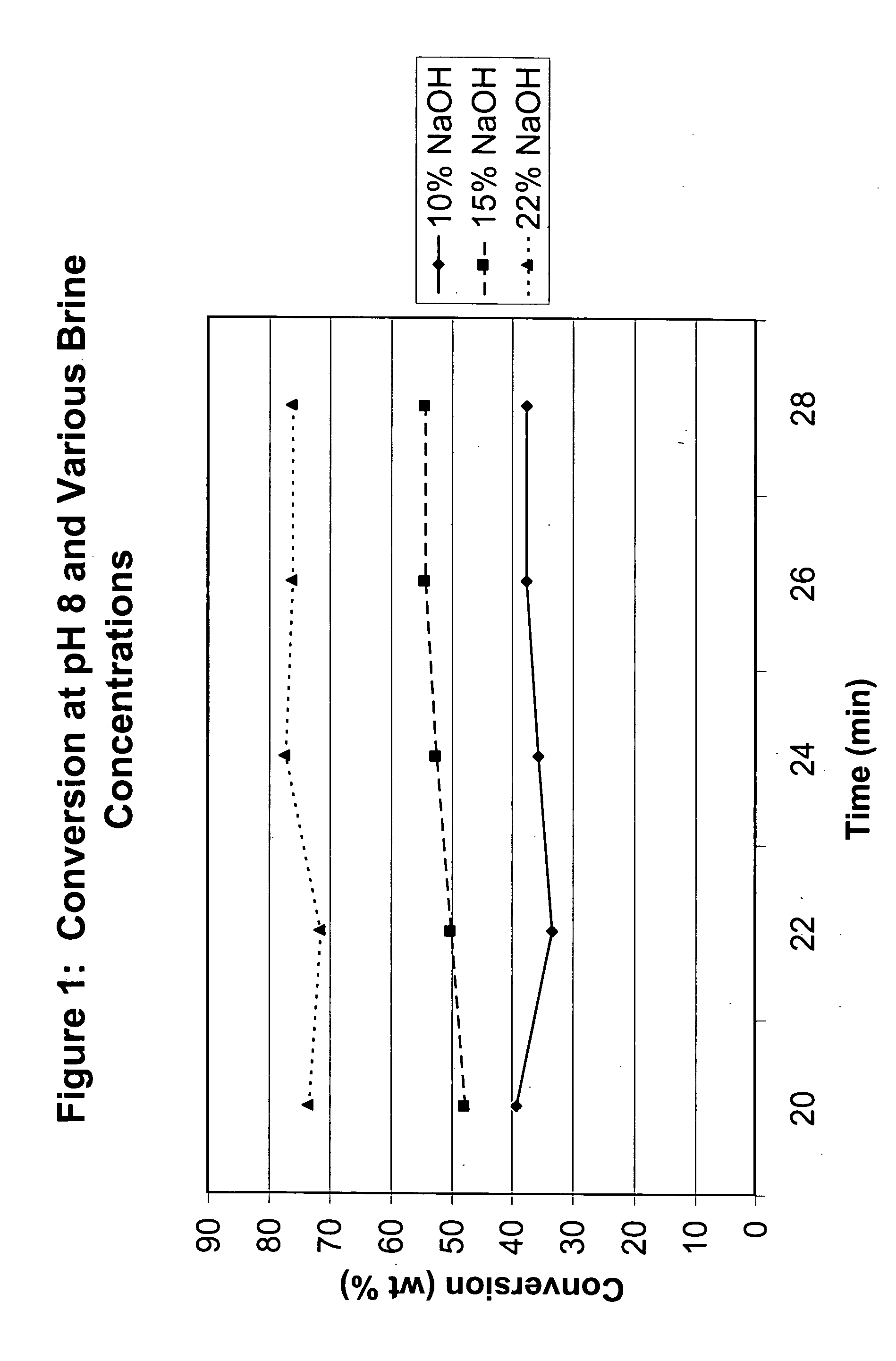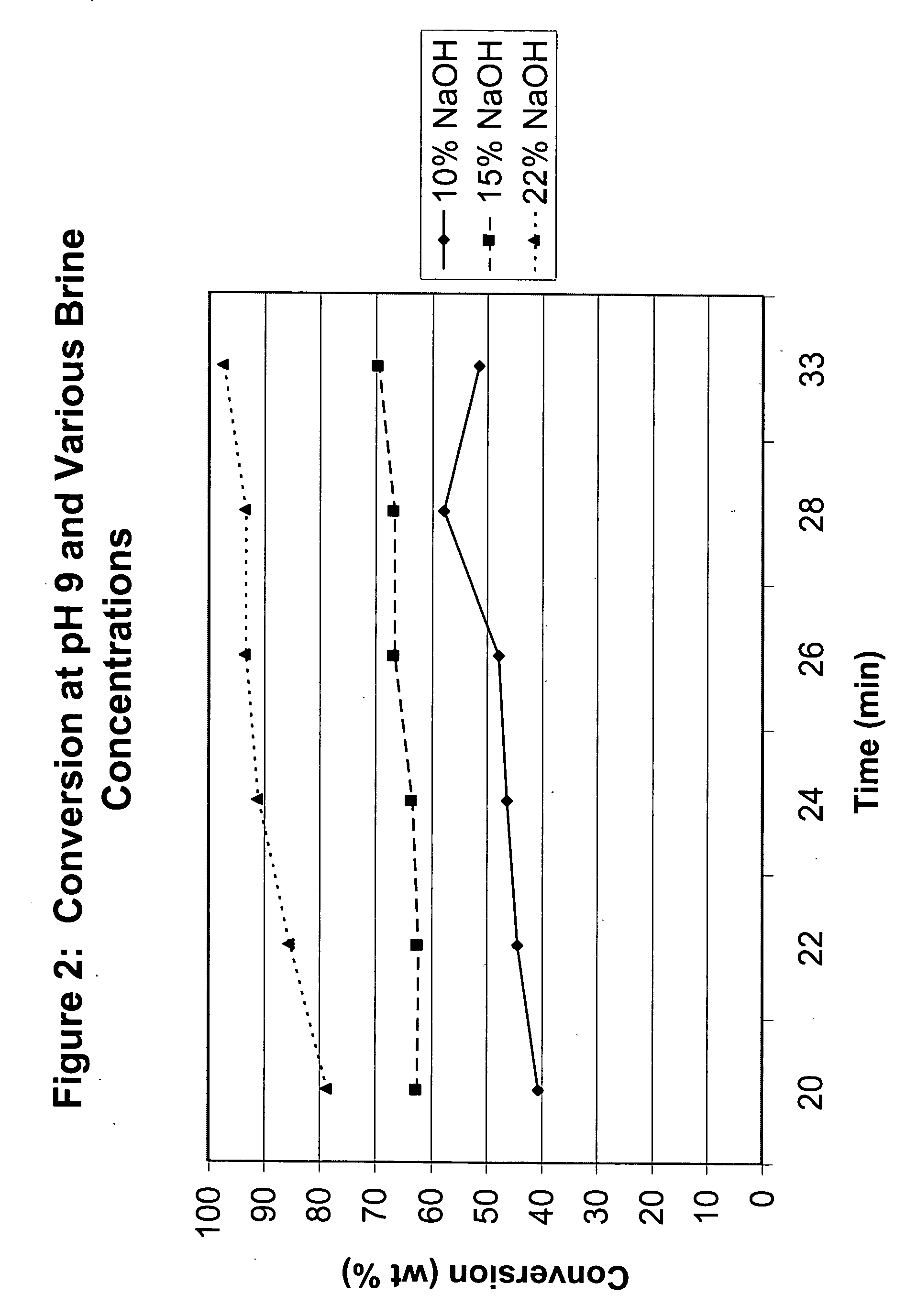Method of preparing ester-substituted diaryl carbonates
a diaryl carbonate and ester-substituted technology, applied in the field of ester-substituted diaryl carbonates, can solve the problem of modest conversion of this ester-substituted phenol to the corresponding diaryl carbonate, and achieve the effect of maximizing conversion and selectivity, minimizing the amount of phosgene required, and high conversion and selectivity
- Summary
- Abstract
- Description
- Claims
- Application Information
AI Technical Summary
Benefits of technology
Problems solved by technology
Method used
Image
Examples
example 3 (
INVENTION)
[0085] The reactor was charged with 500 ml of methylene chloride, methyl salicylate (213 g, 1.40 moles), and triethylamine (1.42 g, 0.014 moles). No water was used in this formulation. Phosgene (103.9 g, 1.05 moles) was added at a rate of 3.46 g / min for 30 min. 22% sodium hydroxide was added at a rate sufficient to maintain a pH of about 12 during the reaction; a total of 469 g of sodium hydroxide solution was used.
example 4 (
INVENTION)
[0086] The reactor was charged with 500 ml of methylene chloride, methyl salicylate (213 g, 1.40 moles), and triethylamine (0.033 g, 0.00033 moles). No water was used in this formulation. Phosgene (90 g, 0.91 moles) was added at a rate of 3.46 g / min for 26 min. 22% sodium hydroxide was added at a rate of 12.72 g / min until about 300 g had been added, then added at a variable rate sufficient to maintain pH of about 12. A total of 346 g of sodium hydroxide solution was used. After the addition of 86.5 g of phosgene, an additional amount of triethylamine (0.73 g, 0.0072 mole) was added to the reaction.
example 5 (
INVENTION)
[0087] The reactor was charged with 470 ml of methylene chloride, methyl salicylate (246 g, 1.617 moles), and triethylamine (0.062 g, 0.00062 moles). No water was used in this formulation. Phosgene (104 g, 1.05 moles) was added at a rate of 4.0 g / min for 26 min. 22% sodium hydroxide was added at a rate of 15.44 g / min until about 385 g had been added, then added at a variable rate sufficient to maintain pH of about 12. A total of 433 g of sodium hydroxide solution was used. After the addition of 91.1 g of phosgene, an additional amount of triethylamine (1.6 g, 0.016 mole) was added to the reaction.
PUM
| Property | Measurement | Unit |
|---|---|---|
| Fraction | aaaaa | aaaaa |
| Fraction | aaaaa | aaaaa |
| Fraction | aaaaa | aaaaa |
Abstract
Description
Claims
Application Information
 Login to View More
Login to View More - R&D
- Intellectual Property
- Life Sciences
- Materials
- Tech Scout
- Unparalleled Data Quality
- Higher Quality Content
- 60% Fewer Hallucinations
Browse by: Latest US Patents, China's latest patents, Technical Efficacy Thesaurus, Application Domain, Technology Topic, Popular Technical Reports.
© 2025 PatSnap. All rights reserved.Legal|Privacy policy|Modern Slavery Act Transparency Statement|Sitemap|About US| Contact US: help@patsnap.com



